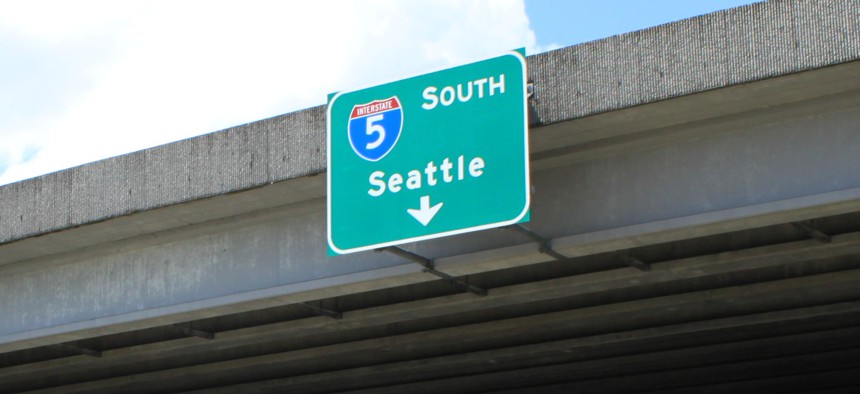Self-Driving Car Plan Envisions Exclusive Use of Freeway by Autonomous Vehicles

Flickr user SounderBruce via CC BY SA-2.0

Connecting state and local government leaders
Unveiled by tech experts, the proposal focuses on Interstate 5 between Seattle and Vancouver, British Columbia.
Self-driving cars and trucks would dominate Interstate 5 between Seattle, Washington, and Vancouver, British Columbia in the coming years, under a proposal a team of Pacific Northwest tech gurus released on Monday.
As envisioned, their plan calls for phasing in autonomous traffic on the interstate over the next 10 to 15 years. To start, self-driving vehicles would mix with regular traffic in HOV lanes. Those lanes would later be designated exclusively for autonomous cars and trucks.
Eventually, the length of Interstate 5 linking Seattle to the Canadian border would be off limits to human-piloted vehicles, except at times when traffic is light, such as weekends and weekdays between 8 p.m. and 4 a.m.
Among the authors of a 16-page report outlining the proposal are Tom Alberg, co-founder of Madrona Venture Group, and Craig Mundie, former chief research and strategy officer for Redmond, Washington-based Microsoft Corp.
Located in Seattle, Madrona is a technology sector venture capital firm.
Erika Shaffer, the company’s director of strategic communications, said in an email Tuesday that the company has invested in a Bellevue, Washington-based startup, Echodyne, which is working to develop radar sensor technology that could be used on autonomous vehicles.
The report about the Interstate 5 proposal does not include any endorsements from government agencies or lawmakers.
And the authors note: “This proposal will initially be highly controversial because of the public’s natural concern about the likelihood and timing of autonomous vehicles, initial accidents and failure to recognize the benefits.”
A key benefit, in the view of the authors, would be the time people could save by not having to drive. Additionally, they say, autonomous vehicles could lead to traffic safety and environmental improvements, as well as increased road capacity.
The report calls on lawmakers to enact legislation that would allow autonomous vehicles to operate in Washington and British Columbia with clear guidelines. It also recommends that a joint U.S.-Canadian commission be established to explore autonomous vehicle issues.
At the Canadian border, Interstate 5 becomes British Columbia Highway 99. Traveling by car between Seattle and Vancouver using the two roadways, is about 140-mile trip. Without major delays it takes about two-and-a-half to three hours.
On Tuesday, the U.S. Department of Transportation issued federal policy guidelines for autonomous vehicles. And, last week, app-based ride-booking giant Uber made a handful of self-driving cars available to customers in Pittsburgh. For now, the Uber vehicles have people onboard who can take over driving if necessary.
A copy of the report outlining the proposal for Interstate 5 can be found here.
Bill Lucia is a Reporter for Government Executive's Route Fifty and is based in Washington, D.C.

NEXT STORY: Navigator Award Finalist: Marcy Jaffe, National Rural Transit Assistance Program





